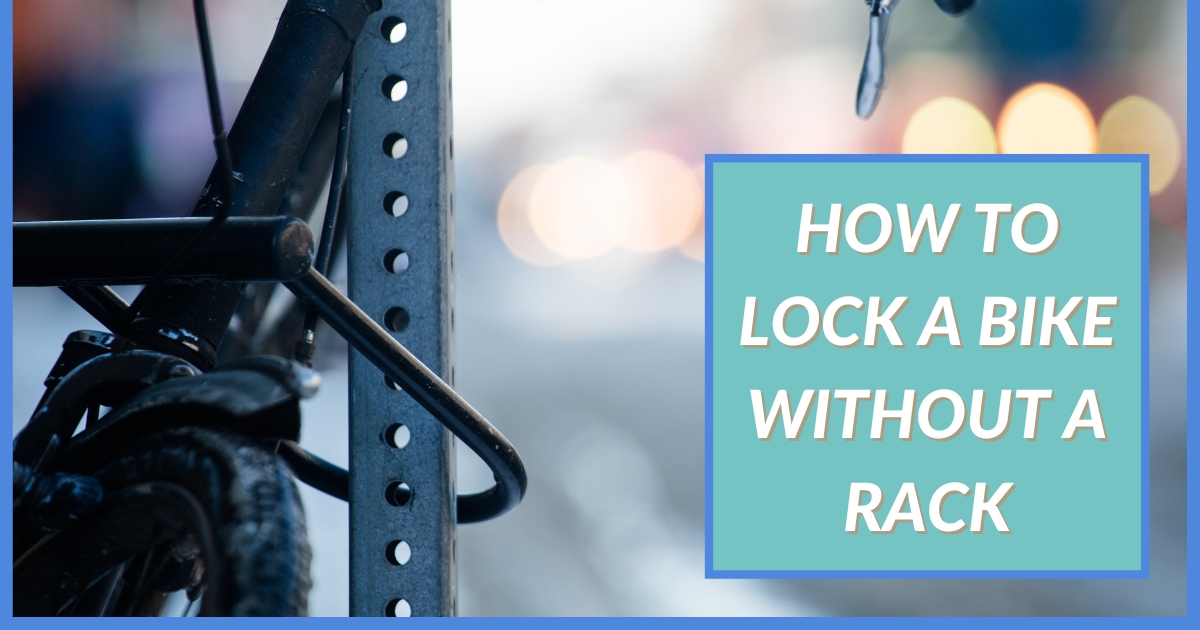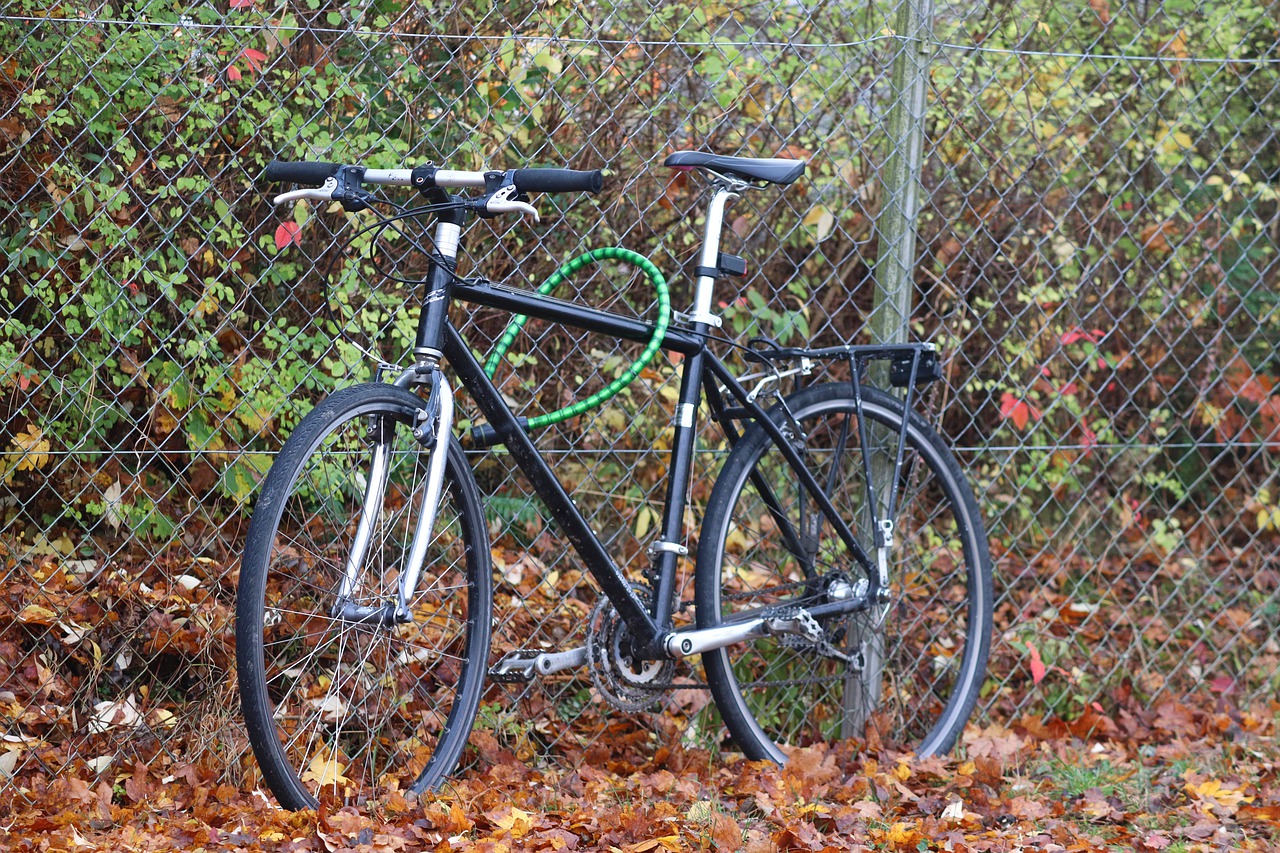Locking your bike is an super important step in safeguarding it against theft. This becomes a challenging task when there’s no bike rack in sight. However, you don’t need to worry as there are several effective methods to secure your bike even without a rack. This blog post will help you figure out various techniques on how to lock a bike without a rack, making sure your bike’s safety in diverse situations.
Whether you’re out for a quick grocery run or embarking on a lengthy ride, safeguarding your bike from theft is super important. The tips and strategies we’ll explore in this post will help you deter potential thieves and keep your bike safe in various environments.
How to Choose a Bike Lock
The foundation of bike security lies in selecting the appropriate lock. Primarily, there are two types of bike locks: cable locks and U-locks.
Cable Locks:
Cable locks are known for their lightweight and portable nature, making them a convenient choice for cyclists. However, it’s important to note that they offer less security compared to U-locks. They are suitable for areas with a lower risk of bike theft or for short durations.
U-Locks:
U-locks are synonymous with enhanced security. Their robust design makes them a formidable barrier for thieves. While they are heavier and less convenient to carry around, the level of security they provide is unmatched. For high-risk areas or when leaving your bike unattended for longer periods, a U-lock is the ideal choice.
When locking your bike in areas known for bike thefts, a U-lock should be your go-to option. For shorter, low-risk trips, a cable lock might suffice. When in doubt about which lock to choose, consulting with a professional at a bike shop can provide valuable insights tailored to your specific needs.
How to Lock Your Bike Without a Rack
Once you’ve chosen your preferred lock, the next step is to learn the art of locking your bike without a rack. Here are several practical tips:
Using a Street Sign or Light Pole:
If a street sign or light pole is within reach, it can serve as a makeshift bike rack. Ensure that the pole is firmly anchored and tall enough so that the bike cannot be lifted over it.
Locking to a Fence or Railing:
Fences and railings are another viable option for securing your bike. Make sure the structure is solid and offers enough space to pass your lock through.
Opting for a Tree:
In the absence of man-made structures, a sturdy tree can be a good alternative. Choose a tree that is robust and healthy to avoid any damage to the tree or risk to your bike. Avoid thin or unhealthy trees, as they provide less security and can be harmful to the tree.
Securing Bike Parts:
Regardless of the anchor point you choose, ensure to lock both the frame and wheels of your bike. This dual-locking method really improves the security of your bike, making it a challenging target for thieves.
Quality of the Lock:
Investing in a high-quality lock, preferably a U-lock, is super important for optimal security. These locks are challenging to break or tamper with, providing a strong deterrent against theft.
Lock Placement:
Positioning your lock in a way that makes it difficult for thieves to access is a strategic move. Locking your bike in a well-lit area, away from secluded spots or dense foliage, reduces the chances of theft.
Visibility and Accessibility:
An important aspect of locking your bike is visibility. Place your bike in a spot where it’s visible to passersby or in the vicinity of security cameras. This added surveillance can deter thieves. However, balance this with accessibility. Avoid blocking pedestrian paths or emergency exits, making sure your bike is locked responsibly.
Lock Positioning:
The way you position your lock can also impact its security. Keep the lock as far off the ground as possible to prevent thieves from using the ground for added leverage in a break-in attempt. Additionally, make sure the keyhole is facing downwards, making it more difficult for a thief to tamper with the lock.
Tips for Locking Your Bike Securely
After identifying a suitable structure to lock your bike, the following tips will help ensure that your bike is locked securely:
Comprehensive Locking:
The best practice is to secure both the frame and wheels of your bike. This can be achieved by using a U-lock to secure the frame and a cable lock to loop through both wheels. This dual approach significantly reduces the risk of parts being stolen.
Lock Quality:
As emphasized earlier, the quality of the lock is paramount. U-locks made from hardened steel offer the best resistance against cutting tools. Investing in a high-quality lock is investing in the security of your bike.
Lock Position:
Optimally position your lock to make it less accessible to thieves. The harder it is for a thief to access your lock, the less likely they are to attempt stealing your bike.
Smart Locking:
Be smart about what you lock your bike to. Ensure the object is immovable and not easily dismantled. For example, some signposts can be lifted out of the ground, rendering your lock ineffective.
Additional Tips for Preventing Bike Theft
Beyond just locking your bike, here are additional measures you can take to further protect your bicycle from theft:
Bike Registration:
Registering your bike with the local police or a bike registration service can be a deterrent to thieves and can aid in recovery if your bike is stolen.
Indoor Storage:
Whenever possible, bring your bike indoors. This is especially advisable for overnight storage or in areas known for high bike theft rates.
Bike Alarms:
Consider investing in a bike alarm. These devices emit a loud sound when the bike is tampered with, drawing attention to the situation and potentially scaring off the thief.
Personal Identification:
Mark your bike with identifiable information. This could be in the form of unique stickers, engravings, or tags that make your bike easily recognizable and traceable back to you.
Insurance:
For high-value bikes, consider getting bike insurance. This provides financial security in case your bike is stolen despite your best efforts to protect it.
Stay Informed:
Keep yourself updated about bike theft trends in your area. This knowledge can help you take appropriate measures and decide where and how to lock your bike safely.
Community Vigilance:
Engage with local cycling communities for shared vigilance. Often, these communities share valuable insights about theft-prone areas and safer alternatives.
Conclusion
Securing your bike without a rack is not only feasible but can be effectively done with the right knowledge and tools. By choosing the right lock, understanding secure locking methods, and implementing additional security measures, you can significantly reduce the risk of bike theft. Remember to always be mindful of where and how you lock your bike. For more information on biking tips and accessories, visit Refried Cycles, your go-to resource for all things cycling.









